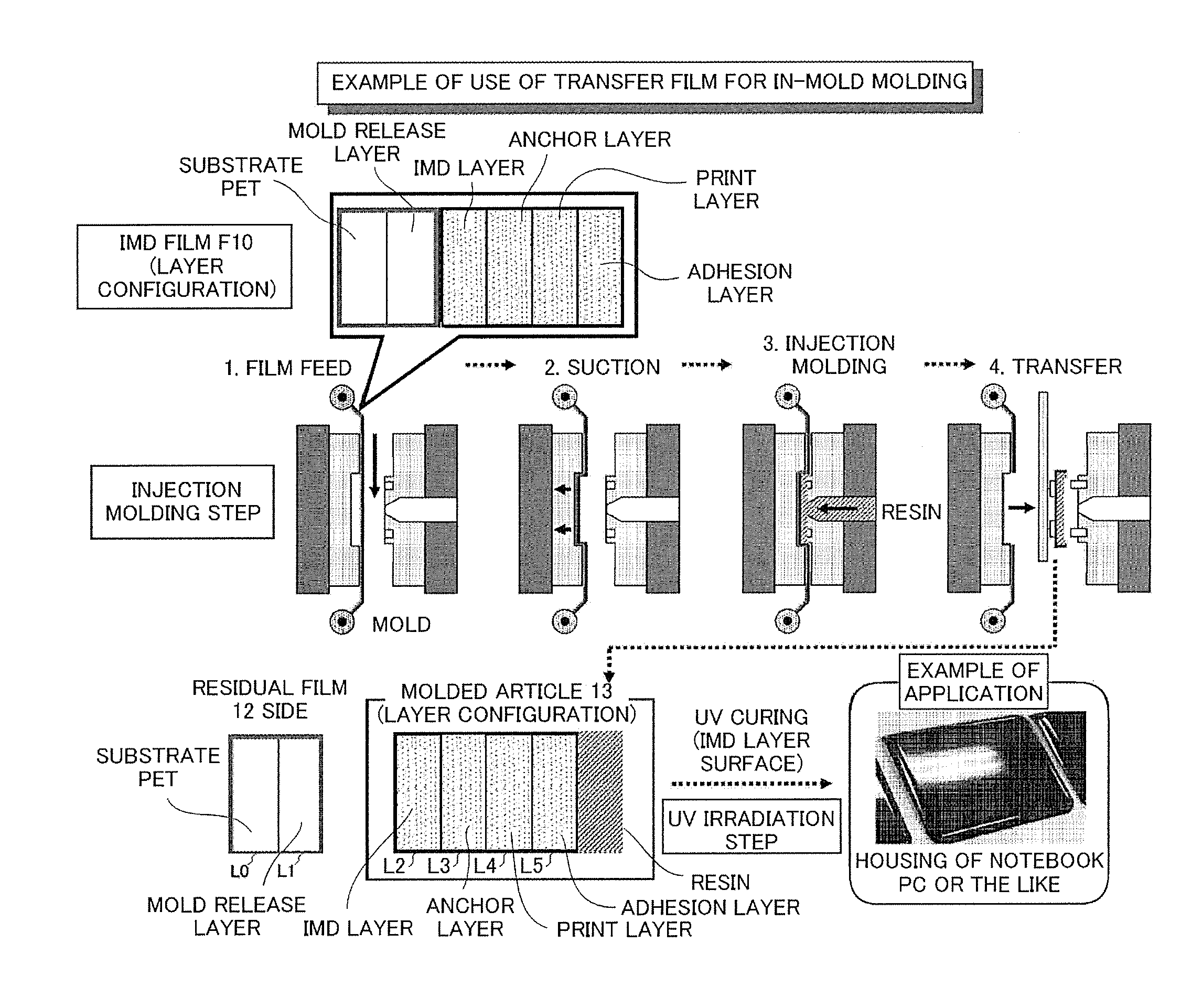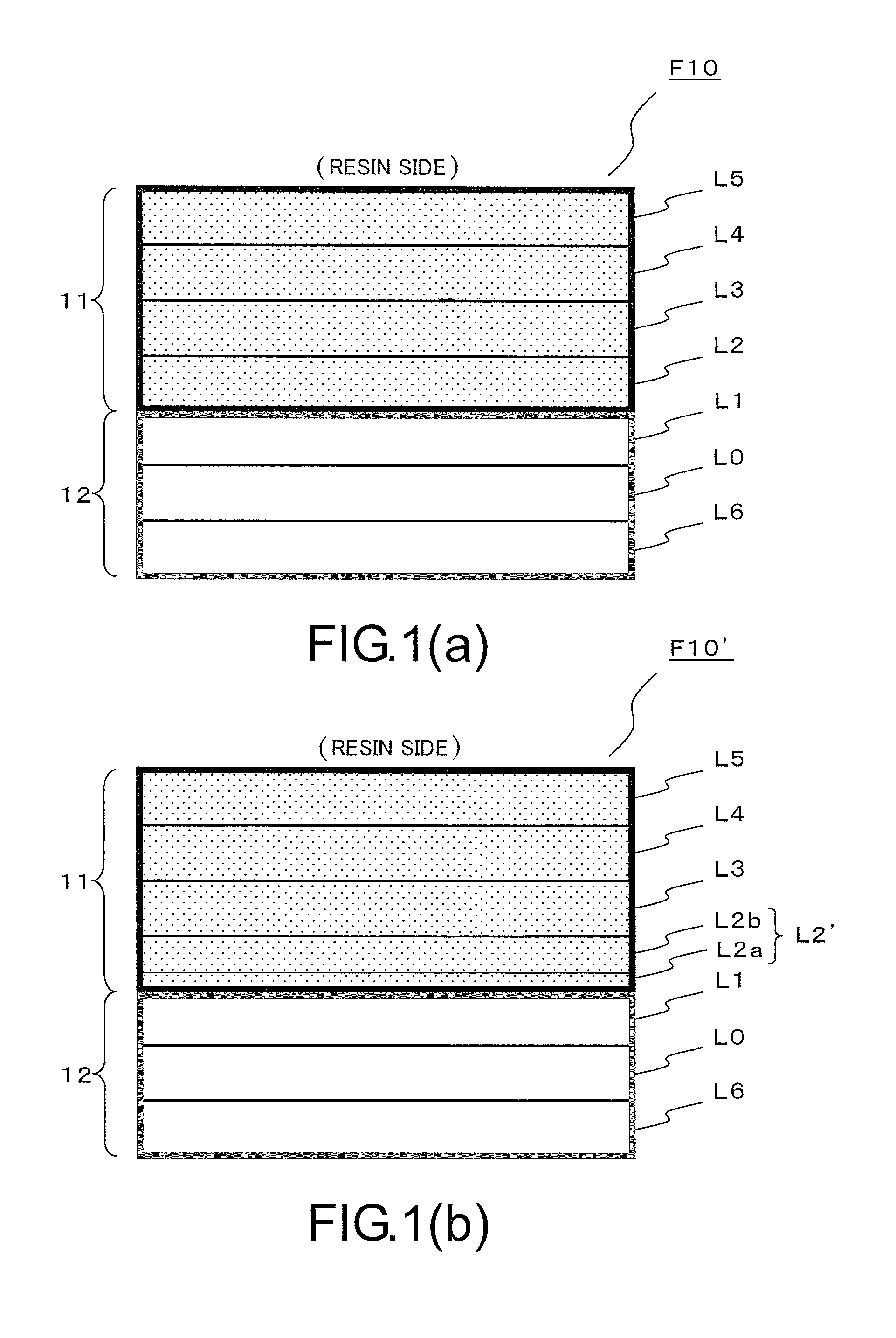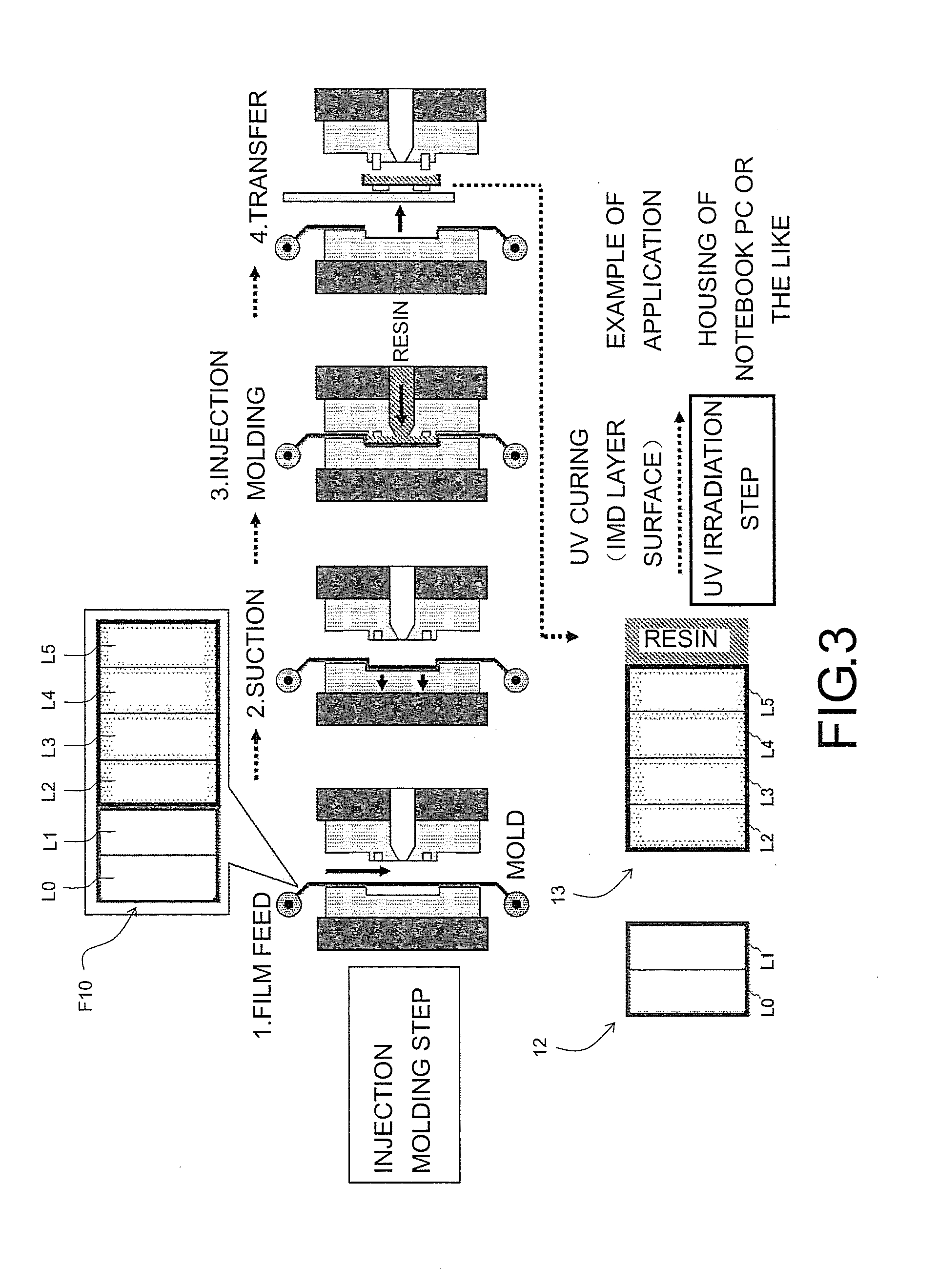Transfer film for in-mold molding and method for producing same
a transfer film and in-mold molding technology, applied in the direction of transportation and packaging, other domestic articles, synthetic resin layered products, etc., can solve the problems of poor conformity of the imd layer to the molded article during molding, the method, and many problems, and achieve the effects of preventing the occurrence of gate flow, excellent solvent resistance, and heat resistan
- Summary
- Abstract
- Description
- Claims
- Application Information
AI Technical Summary
Benefits of technology
Problems solved by technology
Method used
Image
Examples
example 1
Formation of Mold Release Layer
[0140]A coating fluid C1 (resin component concentration: 10% by weight) composed of 32.5% by weight of a melamine-based mold release coating agent (Mitsuwa Chemical Lab. Co., Ltd.: ATOM BOND (trade name) RP-30, approximately 30% by weight of a resin component is contained in the product), a 64.9% by weight of a toluene / xylene / 2-butanone mixed solvent (Mitsuwa Chemical Lab. Co., Ltd.: ATOM BOND (trade name) R-thinner) as a diluting solvent, 2.6% by weight of a para-toluene sulfonic acid ester (Mitsuwa Chemical Lab. Co., Ltd.: CP catalyst) as a catalyst was prepared.
[0141]The obtained coating fluid C1 was applied to the easily-adhesive coating side of a polyethylene terephthalate film (thickness: 50 μm, G440E) manufactured by Mitsubishi Plastics, Inc. as a substrate film L0 with a coating rod (#6) manufactured by RD Specialties, Inc.
[0142]The obtained coated film was simultaneously cured and dried for 20 seconds in a high-temperature chamber at 150° C., ...
example 2
[0149]A film F2-2 in which a substrate film L0 (PET), a mold release layer L1 and an IMD layer L2-2 were laminated in this order was obtained by repeating the same procedure as in Example 1 except that a coating fluid C2-2 (resin component concentration: 30% by weight) composed of 40.5% by weight of a photoinitiator-containing UV-reactive acrylic resin (DIC Corporation: UVT Clear (trade name) NSF-001), 15.0% by weight of an alicyclic multifunctional epoxy resin (Daicel Corporation: Celloxide 3150, epoxy equivalent: 180 g / mol), 43.6% by weight of 2-butanone (MEK) and 0.9% by weight of a cationic polymerization initiator (Sanshin Chemical Industry Co., Ltd.: Sanaid (trade name) SI-60) was used instead of the coating fluid C2-1 in forming an IMD layer to obtain the IMD layer L2-2.
example 3
Formation of Anchor Layer
[0176]A coating fluid C3-1 (resin component concentration: 20% by weight) composed of 36.8% by weight of a urethane resin (DIC Corporation: UC Sealer (trade name) NA-001, approximately 30% by weight of a resin component is contained in the product), 7.4% by weight of a urethane curing agent (DIC Corporation: N-1, approximately 40% by weight of a resin component is contained in the product), 6.0% by weight of an alicyclic multifunctional epoxy resin (Daicel Corporation: Celloxide 3150, epoxy equivalent: 180 g / mol), 49.5% by weight of 2-butanone (MEK) and 0.3% by weight of a cationic polymerization initiator (Sanshin Chemical Industry Co., Ltd.: Sanaid (trade name) SI-60) was prepared.
[0177]The obtained coating fluid C3-1 was applied to the surface of the IMD layer of the film F2-1 with a coating rod (#9) manufactured by RD Specialties, Inc.
[0178]The obtained coated film was dried for 60 seconds in a high-temperature chamber at 140° C., thereby obtaining a fil...
PUM
| Property | Measurement | Unit |
|---|---|---|
| Electrical resistance | aaaaa | aaaaa |
| Adhesion strength | aaaaa | aaaaa |
| Moldable | aaaaa | aaaaa |
Abstract
Description
Claims
Application Information
 Login to View More
Login to View More - R&D
- Intellectual Property
- Life Sciences
- Materials
- Tech Scout
- Unparalleled Data Quality
- Higher Quality Content
- 60% Fewer Hallucinations
Browse by: Latest US Patents, China's latest patents, Technical Efficacy Thesaurus, Application Domain, Technology Topic, Popular Technical Reports.
© 2025 PatSnap. All rights reserved.Legal|Privacy policy|Modern Slavery Act Transparency Statement|Sitemap|About US| Contact US: help@patsnap.com



